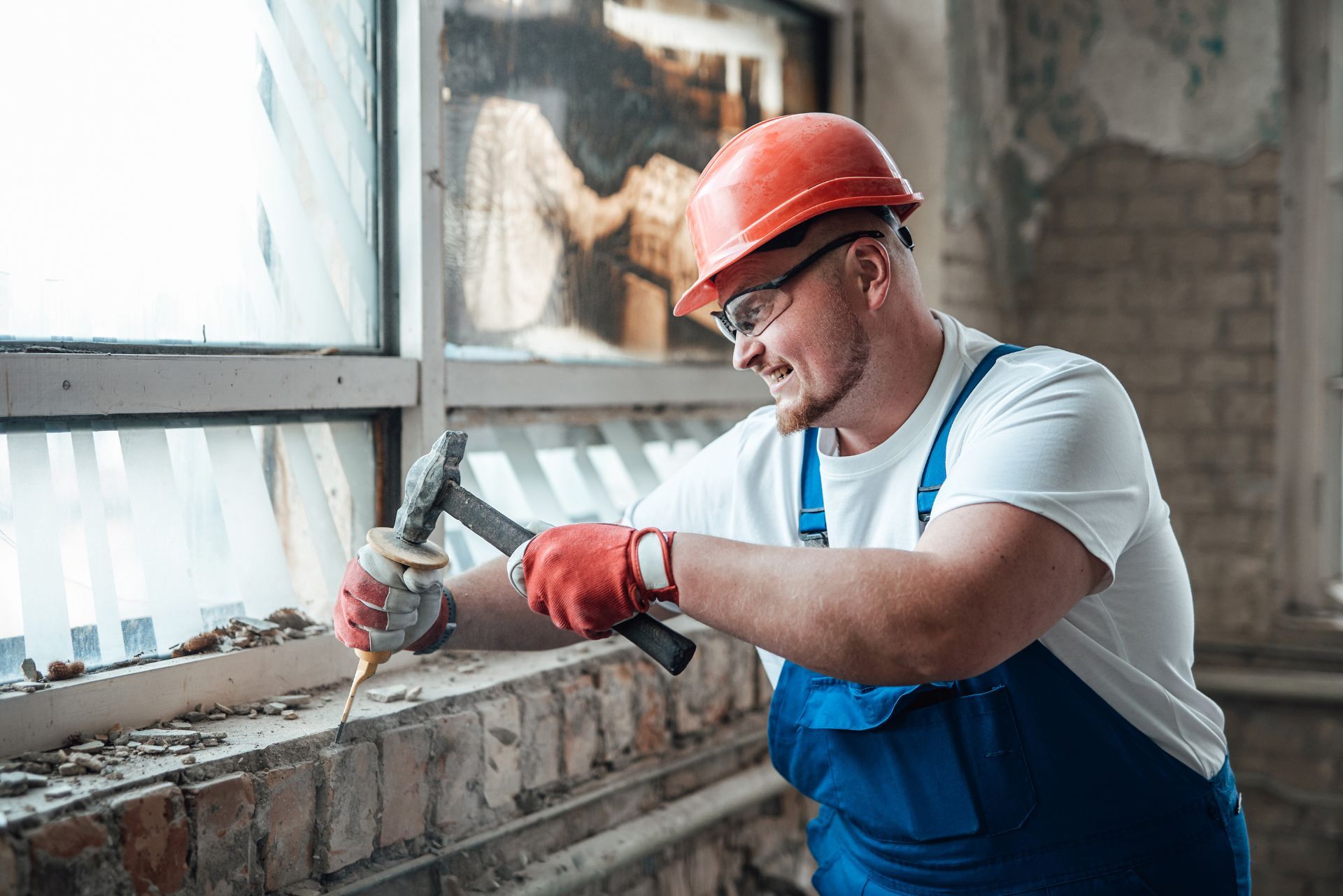Top 3 Recommended Policies

In the world of construction and restoration, having the right insurance is crucial for protecting both the business and its clients. Wyoming restoration contractors face unique challenges, and understanding the nuances of insurance can make all the difference in ensuring a successful operation. This article delves into the essential aspects of restoration contractor insurance in Wyoming, providing a comprehensive overview for those in the industry.
Understanding Restoration Contractor Insurance
Restoration contractor insurance is a specialized form of coverage designed to protect businesses that restore properties after damage from disasters such as fires, floods, or mold infestations. This type of insurance encompasses various policies that work together to safeguard contractors from potential risks associated with their work. The unpredictable nature of restoration projects means that having the right insurance can be the difference between a thriving business and one that is financially crippled by unforeseen events.
Types of Coverage
There are several key types of insurance coverage that restoration contractors should consider:
- General Liability Insurance: This is the foundational coverage for any contractor. It protects against claims of bodily injury, property damage, and personal injury that may arise during the course of business operations. For example, if a client trips over equipment left on-site and sustains an injury, general liability insurance would cover the medical expenses and any legal fees incurred.
- Professional Liability Insurance: Also known as errors and omissions insurance, this coverage is essential for contractors who provide professional advice or services. It protects against claims of negligence or failure to deliver promised services. In the restoration industry, this could include situations where a contractor's failure to identify mold leads to further damage, resulting in costly repairs for the homeowner.
- Workers' Compensation Insurance: In Wyoming, businesses with employees are required to carry workers' compensation insurance. This coverage provides benefits to employees who are injured on the job, covering medical expenses and lost wages. This is particularly crucial in restoration work, where employees may be exposed to hazardous conditions, such as unstable structures or toxic substances.
Additional Coverages
Beyond the basic types of coverage, restoration contractors may also want to consider additional policies:
- Commercial Auto Insurance: If a contractor uses vehicles for business purposes, this insurance is necessary to cover accidents and damages that occur while driving for work. This is especially relevant for restoration contractors who may need to transport heavy equipment or travel to various job sites, often under tight deadlines.
- Equipment and Tools Insurance: Restoration work often requires specialized equipment. This coverage protects against theft, loss, or damage to tools and machinery. Given the significant investment in high-tech equipment, such as moisture meters and industrial-grade dehumidifiers, having this insurance can help contractors avoid substantial financial losses.
- Pollution Liability Insurance: Given the nature of restoration work, contractors may encounter hazardous materials. This insurance covers claims related to pollution or environmental damage resulting from their operations. For instance, if a restoration project involves the removal of asbestos or lead paint, this coverage can protect contractors from liability if any contaminants are inadvertently released into the environment.
In addition to these coverages, restoration contractors should also consider the importance of having a comprehensive risk management plan in place. This plan can help identify potential hazards and outline procedures to mitigate risks, ensuring that both the business and its employees are protected. Regular training sessions for staff on safety protocols and emergency response can further enhance the effectiveness of a contractor's insurance policy, as it demonstrates a commitment to maintaining a safe working environment. Moreover, staying informed about changes in regulations and industry standards can help contractors adapt their insurance needs accordingly, ensuring they remain compliant and adequately protected against evolving risks.

Why Insurance is Essential for Restoration Contractors
Insurance is not just a legal requirement; it is a vital component of risk management for restoration contractors. The restoration industry is fraught with potential hazards, from accidents on job sites to disputes with clients. Having the right insurance in place can mitigate financial losses and provide peace of mind.
Protecting Against Liability
Liability claims can arise unexpectedly, and without proper insurance, a contractor could face significant financial burdens. General liability insurance protects against claims that could otherwise lead to devastating legal fees and settlements. This coverage ensures that contractors can focus on their work rather than worrying about potential lawsuits. Moreover, it can also enhance a contractor's reputation; clients are more likely to hire a contractor who is fully insured, as it demonstrates professionalism and a commitment to responsible business practices.
Safeguarding Employees
Employees are the backbone of any restoration business. Workers' compensation insurance is not only a legal requirement but also a moral obligation to protect employees from work-related injuries. This coverage helps maintain a safe working environment and fosters employee loyalty and trust. Additionally, investing in insurance can lead to a more engaged workforce, as employees feel valued and secure knowing that their well-being is prioritized. Furthermore, many insurance policies offer resources for safety training and risk management, which can further reduce the likelihood of accidents and enhance overall operational efficiency.
Protecting Your Equipment and Assets
In the restoration industry, equipment and tools are essential for completing projects efficiently and effectively. Property insurance safeguards against theft, damage, or loss of these vital assets, ensuring that contractors can quickly resume work without incurring significant out-of-pocket expenses. This type of insurance can cover everything from specialized machinery to vehicles used on job sites. Additionally, having comprehensive coverage can also facilitate smoother operations during unexpected events, such as natural disasters, where equipment may be at risk. By protecting their assets, restoration contractors can maintain their competitive edge and ensure that they are always prepared to meet client demands.
Ensuring Business Continuity
Business interruption insurance is another critical aspect of coverage for restoration contractors. This insurance helps protect against lost income when unforeseen events disrupt normal operations, such as a fire or severe weather conditions. By having this safety net in place, contractors can navigate through challenging times without the added stress of financial instability. This coverage not only helps in maintaining cash flow but also allows businesses to invest in recovery efforts and return to full operations more swiftly. In an industry where timely responses are crucial, such insurance can be the difference between thriving and merely surviving in the face of adversity.
Legal Requirements in Wyoming
In Wyoming, restoration contractors must adhere to specific legal requirements regarding insurance. Understanding these regulations is crucial for compliance and to avoid penalties.
State Regulations
Wyoming law mandates that businesses with employees carry workers' compensation insurance. This requirement helps protect workers and ensures that they receive necessary benefits in case of workplace injuries. Additionally, while general liability insurance is not legally required, it is highly recommended for contractors to safeguard against potential claims. This type of insurance can cover costs associated with property damage or bodily injury that may occur during the course of work, providing an essential safety net for contractors and their clients alike.
Licensing and Insurance Verification
Before beginning work, restoration contractors must obtain the appropriate licenses and permits. The Wyoming Department of Workforce Services and local municipalities often require proof of insurance as part of the licensing process. This verification ensures that contractors are operating within the legal framework and are financially responsible. Furthermore, maintaining a valid license not only enhances a contractor's credibility but also instills confidence in clients, who can rest assured that they are hiring a qualified professional. Regular updates and renewals of these licenses are also critical, as failing to do so can result in fines or the suspension of business operations.
Moreover, contractors should be aware of the importance of keeping abreast of any changes in local regulations or state laws that may affect their operations. Engaging with local trade associations or industry groups can provide valuable insights into best practices and emerging legal requirements. Networking with other professionals in the field can also facilitate knowledge sharing about compliance strategies and risk management, ultimately contributing to a more robust and resilient business model in the competitive restoration industry.
Choosing the Right Insurance Provider
Selecting the right insurance provider is a critical decision for restoration contractors. The right partner can make a significant difference in the level of service and coverage received.
Factors to Consider
When evaluating insurance providers, consider the following factors:
- Experience in the Industry: Look for providers that specialize in contractor insurance and have experience in the restoration field. This expertise can lead to better coverage options tailored to specific needs.
- Customer Service: Quality customer service is essential. A responsive insurer can help navigate claims processes and answer questions promptly.
- Financial Stability: Research the financial health of potential insurance companies. A stable provider is more likely to fulfill claims and provide reliable coverage.
Getting Quotes
Obtaining multiple quotes is a smart strategy. It allows contractors to compare coverage options, premiums, and deductibles. When reviewing quotes, ensure that the coverage limits meet the specific needs of the business, and don’t hesitate to ask questions about any unclear terms or conditions.
Additionally, it’s beneficial to look beyond just the numbers. Consider the reputation of the insurance provider in the industry. Online reviews, testimonials from other contractors, and ratings from independent agencies can provide valuable insights into the reliability and service quality of the insurer. Engaging with peers in the restoration community can also yield recommendations based on firsthand experiences, helping to identify providers that have a proven track record of supporting contractors effectively.
Moreover, take the time to understand the specifics of the coverage offered. Different policies may include various exclusions or limitations that could impact your business in the event of a claim. Pay attention to the types of coverage available, such as general liability, workers' compensation, and property insurance, and assess how they align with the unique risks associated with restoration work. This thorough approach will ensure that you choose an insurance provider that not only meets your immediate needs but also supports your business's long-term growth and stability.

Cost of Restoration Contractor Insurance
The cost of insurance can vary significantly based on several factors. Understanding these factors can help contractors budget effectively and find the best coverage for their needs.
Factors Influencing Cost
Several elements can impact the cost of restoration contractor insurance:
- Business Size: Larger businesses with more employees and higher revenue may face higher premiums due to increased risk exposure.
- Type of Work: The nature of the restoration work performed can affect costs. High-risk activities may lead to higher premiums.
- Claims History: A history of frequent claims can result in increased premiums. Insurers often view past claims as an indicator of future risk.
Average Premiums
While costs can vary, restoration contractors in Wyoming can expect to pay an average of $1,200 to $3,000 annually for general liability insurance. Workers' compensation premiums are typically based on payroll and the type of work performed, with average costs ranging from $0.75 to $2.00 per $100 of payroll.
In addition to these factors, the location of the business can also play a significant role in determining insurance costs. For instance, contractors operating in areas prone to natural disasters, such as floods or wildfires, may face higher premiums due to the increased likelihood of claims. Moreover, the local regulatory environment can influence costs; states with stricter insurance requirements or higher minimum coverage limits may lead to increased expenses for contractors. Understanding the local market and potential risks can help contractors make informed decisions when selecting their insurance policies.
Another critical aspect to consider is the level of coverage required. Restoration contractors may need to assess their specific needs, such as whether they require additional coverage for equipment, tools, or vehicles used in their operations. Some may opt for specialized policies that cater specifically to restoration work, which can provide tailored coverage but may also come with higher premiums. By carefully evaluating their coverage options and potential risks, contractors can strike a balance between adequate protection and manageable costs.
Claims Process for Restoration Contractors
Understanding the claims process is essential for restoration contractors. Knowing how to navigate this process can save time and reduce stress when faced with a claim.
Steps to File a Claim
Filing a claim generally involves several key steps:
- Report the Incident: As soon as an incident occurs, it should be reported to the insurance provider. Prompt reporting can expedite the claims process.
- Gather Documentation: Collect all relevant documentation, including photos, witness statements, and any other evidence that supports the claim.
- Complete the Claim Form: Fill out the necessary claim forms provided by the insurer. Be thorough and accurate to avoid delays.
- Follow Up: Stay in contact with the insurance company to track the status of the claim and provide any additional information they may request.
Common Challenges
Restoration contractors may face several challenges during the claims process, including delays in processing or disputes over coverage. It is crucial to maintain clear communication with the insurance provider and to be persistent in following up on claims.
Risk Management Strategies
Effective risk management can help restoration contractors minimize potential claims and reduce insurance costs. Implementing proactive strategies can lead to a safer work environment and lower premiums.
Training and Safety Protocols
Investing in employee training and safety protocols is essential. Regular safety meetings, training sessions, and clear communication of safety practices can help prevent accidents and injuries on job sites. A strong safety record can also lead to lower insurance premiums.
Regular Equipment Maintenance
Ensuring that all equipment is well-maintained can prevent accidents and equipment failures. Regular inspections and servicing of tools and machinery can reduce the risk of incidents that may lead to claims.
Conclusion
Restoration contractor insurance is a critical aspect of running a successful business in Wyoming. Understanding the various types of coverage, legal requirements, and risk management strategies can help contractors protect their businesses and their employees. By choosing the right insurance provider and implementing proactive measures, restoration contractors can navigate the complexities of the industry with confidence.
As the restoration industry continues to evolve, staying informed about insurance options and best practices will be key to long-term success. Whether a contractor is just starting or has been in business for years, investing time and resources into understanding insurance can pay off significantly in the long run.
Contact Us
Phone
Location

